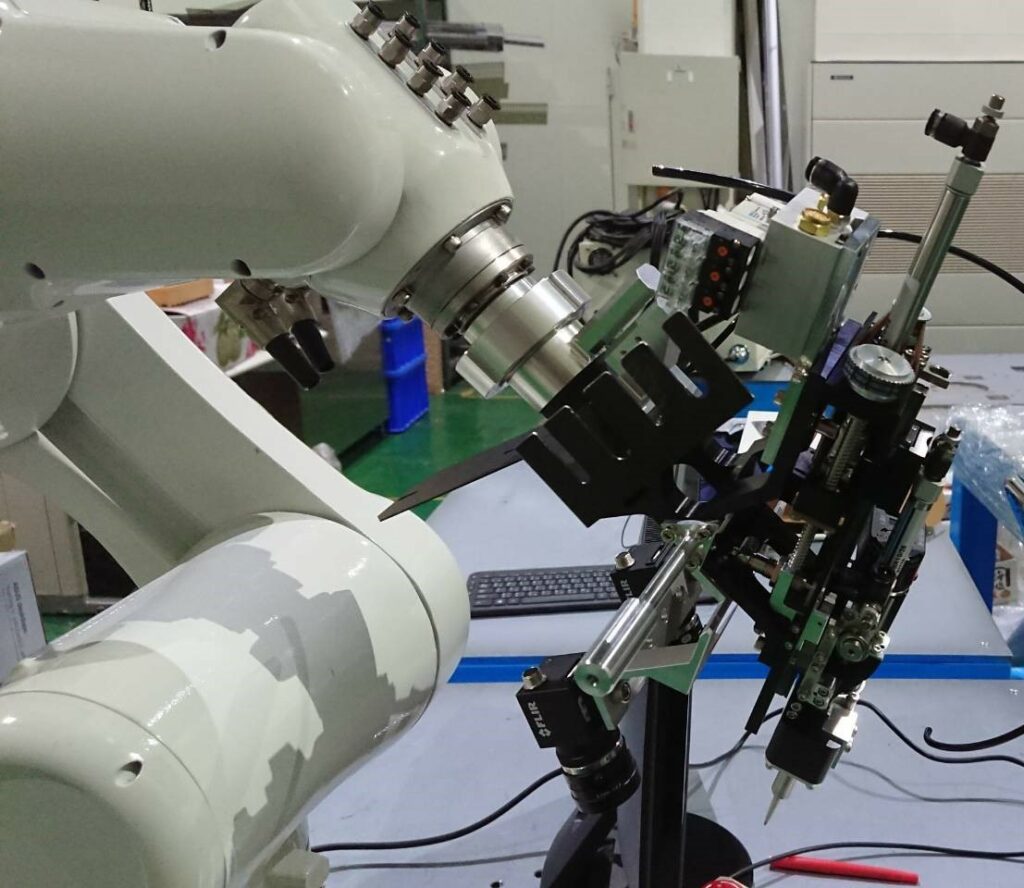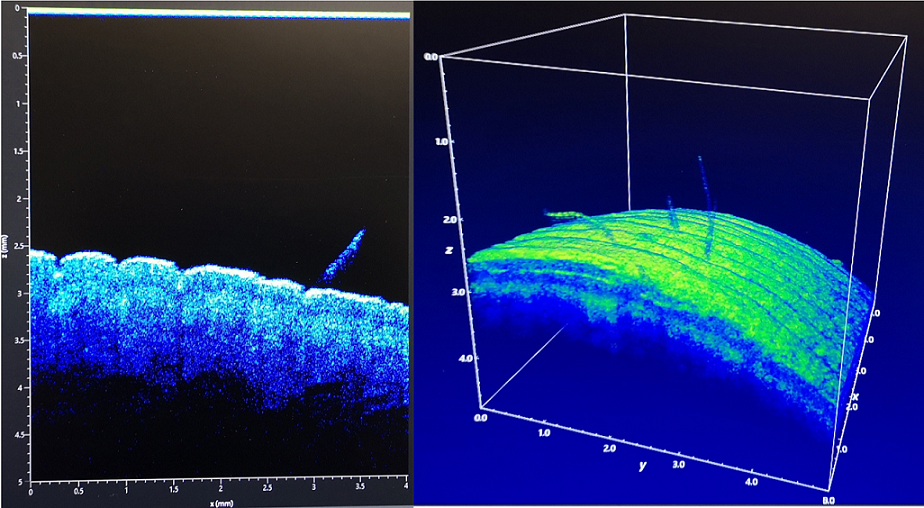With the advancement of technology, medical robots have been widely adopted in many hospitals in Hong Kong and around the world. More and more conventional open surgical processes are replaced by robot-assisted minimally invasive surgeries. However, due to the lack of significant haptic feedback, accidents of robotic surgical systems have been reported occasionally. CUHK research team develops an innovative compact imaging and sensing system that can be integrated to different robotic systems, such as da Vinci Surgical System, to improve accuracy, flexibility and safety. It may reduce these preventable incidents in the future.
- The system includes a miniaturized high-speed optical coherence tomographic robotic vision system (OCTRVS) and disposable high-sensitivity flexible tactile sensor.
- OCTRVS allows real-time visualization of sub-surface 3D blood vessels with depths of 2 – 5 mm.
- Flexible tactile sensing technology provides high-sensitivity, real-time haptic feedback (pressure sensitivity of 2 kPa-1; force measurement range of 0-10 N), emulating a real surgeon’s haptic feedback on robot-end effectors.
Uniqueness and Competitive Advantages:
- Fast, real-time, sub-surface 3D robotic vision system
- High sensitivity, true, real-time surgeon’s haptic feedback
- Compact and Integrated modules
Applications:
The vision and electronic sensing system will be readily used and implemented on medical robotic platforms to increase precision, flexibility and safety of operation.
Example – Six-axis Hair Transplant Robot
The OCTRVS system can perform real-time sub-surface imaging for a depth of 2 – 5 mm, it can directly locate the hair follicle in the scalp instead of prediction. With our new system, the six-axis robot arm can carry the OCTRVS system to scan the scalp contour and provide a 3-D hair follicle map.
Target Users:
- 01Local hospitals
- 02Clinics and cosmetic institute
- 03Cosmetic and surgical robot producers




